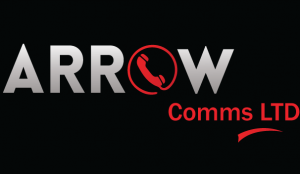We divide these WebRTC services into two types:
a) Horizontals: These are purely technological and are applicable to all industries. These services can be “industrialized” and consequently duplicated (which results in relatively low operational costs for the channel), regardless of the kind of customer or industry involved. However, in some cases the services can be seen as basic, and the client may require a more customized fit. So, for these services, channel partners can personalize their WebRTC tools to comply with individual requirements.
b) Verticals: After customizing the desired type of service, we can address customers who need services to be further adapted to their sector. This forms the second step of the “industrialization” of services.
In this document, we will talk about some of the horizontal value-added services that channel partners can provide:
Identity Authentication
A company can implement a WebRTC-based identity validation service to let customers open accounts. The user can start a session with the company from their device to create an account. Sessions can then be recorded for regulatory compliance fines (which is important for the financial sector or services provided by public entities). Here there would be multiple value-added services for the channel partner to include, since they must integrate various technologies that guarantee authentication with the adapted platform.
Conference and Collaboration
This includes sharing links with external parties. The services for the channel here are self-evident — namely, integrating connections with both the different devices and hardware in general: cameras, screens, conference telephone systems, displays, SIP devices, etc. Furthermore, Wildix has specific hardware for this purpose. If a project can be integrated from scratch, we can provide another type of native integration.
Finally, this type of service can also be offered by the channel under the managed service model. Here, channels can offer their customers the option to use Wildix in a pay-per-use mode for licenses while the channel offers their own current services (e.g., renting hardware, with or without Wildix) and tailored services that the client needs delivered via the tools within Wildix CDR.
Customer Support
In addition to using Kite as a “click-to-call” tool from Wildix, channel partners can offer new services. For instance, partners can use their customers’ website to build value-added services such as maintenance support, programs for VIP users, hospitality resources, emergency contacts and other differentiating functions. On the other hand, a key point in this category is integration with CRMs, which provide a better service for the end-user’s customers. (Other posts on the Wildix blog discuss this in more detail). Even if channel partners do not fully understand CRMs, the programs can still be integrated with Wildix tools to let customers connect with such software.
In summary, we have two simple services for customer support: Kite and CRM integrations. In addition, partners can offer customized statistics via CDR.
Perimeter and Video Security Systems
Basically, this refers to integrations with access control systems such as Mobotix or 2N (among others) in order to allow mobile devices or Wildix phones to monitor or even interact with those systems. The services available for channel partners in this category do not need any explanation. The clear point here is to give System Integrators who have expertise in deploying security systems the opportunity to integrate WebRTC capabilities — including video and its related maintenance — then customize the functions according to the end-user’s requirements during the life cycle of the service.
Internet of Things (IoT)
This field deserves its own separate chapter, but it seems clear that the services that the channel can offer over it are extensive (as we have already seen from experience).
Emergency Services
Emergency calls can be received on a device (including mobile ones) generated by its control center, allowing for various types of notices such as text, voice, video, recordings, and so forth. These communications would be supported by staff in schools, corporate emergencies response teams, hospitals, travel agencies, roadside assistance, etc. The value-added services generated by the integrator are, in this case, too obvious to mention.
Integration with Third-Party Applications and Devices
Many channel partners have developed applications for specific purposes. Now they can incorporate WebRTC capabilities into such applications (e.g., management consoles) by integrating devices with functionalities seen in smart decoders, smart TVs, intercoms, car screens, and other non-IoT devices fit for an enterprise environment.
Integration with Contact Centers
Regardless of the type of contact center that we integrate using Wildix’s CDR tools, we can obtain multiple types of statistics. It is not necessary to be a specialist over the contact center of any particular manufacturer to do so. In simple terms, by using Wildix’s tools we can obtain statistics on calls (including video, voice, fax, recordings and collaboration), SIP trunk usage, call tree optimization to define appropriate strategies, priority settings, dynamic definitions concerning agent groups, BLF definitions, service quality management, priority settings, wait times, and more. (Another post on the Wildix blog explains this in further detail).
In summary, we have offered ideas about numerous cross-industry value-added services. Now channel partners can evolve their current business into a model that uses Wildix WebRTC solutions … and even create new ones!
As we said previously, Wildix thinks what’s changing isn’t the value chain, but the value added within the chain!









